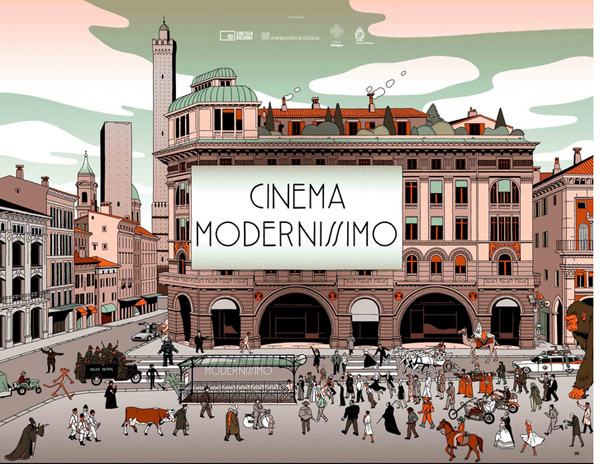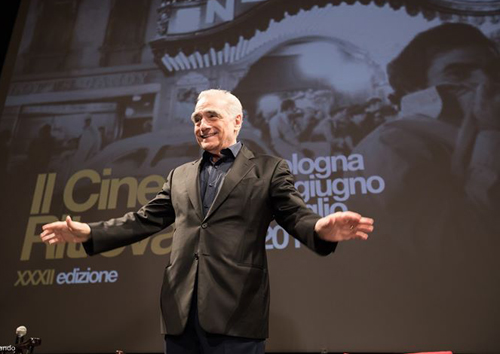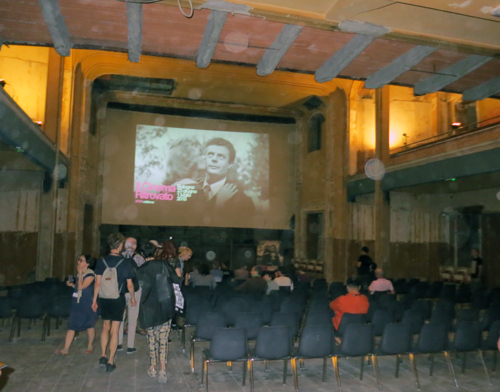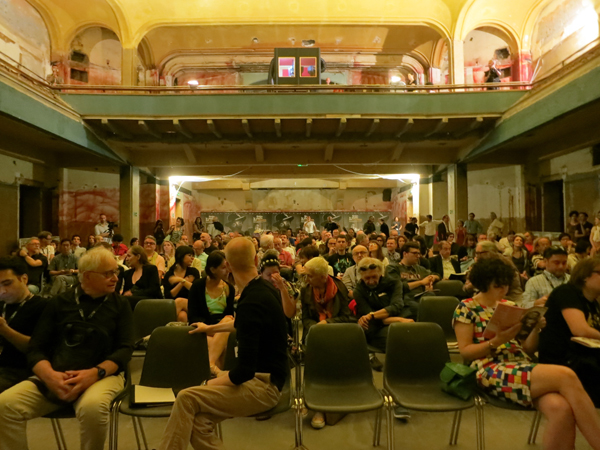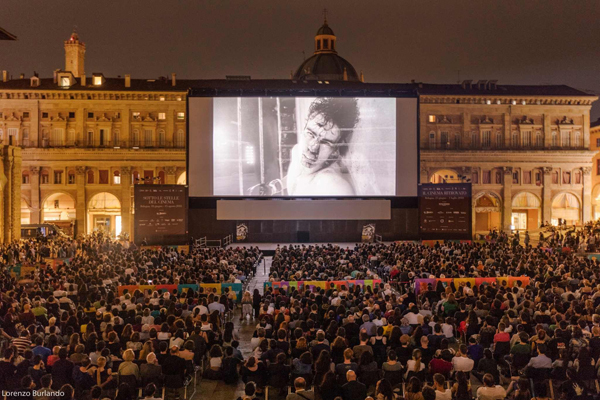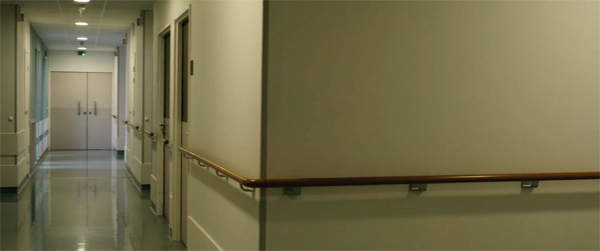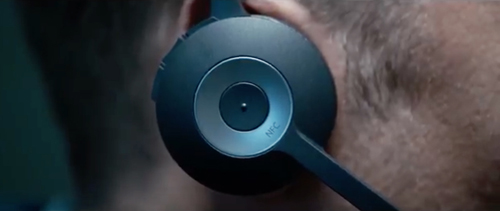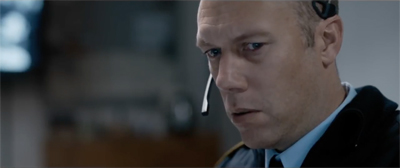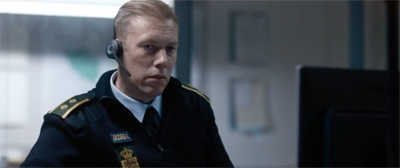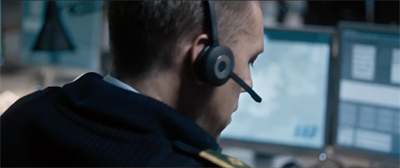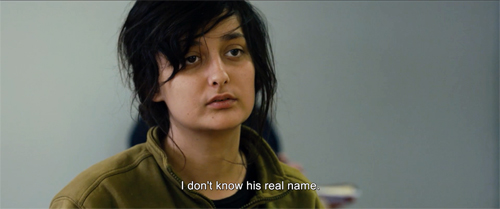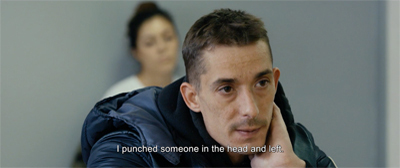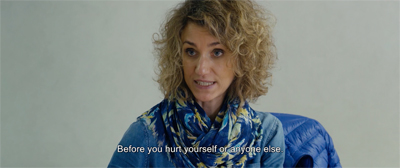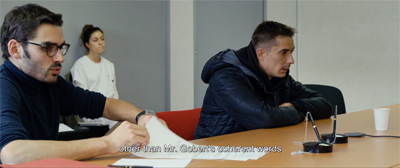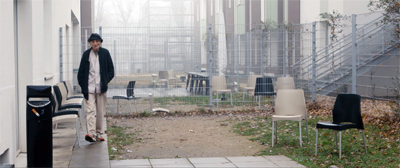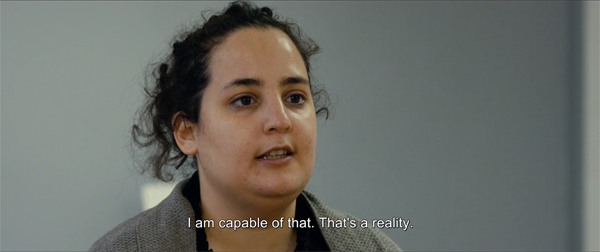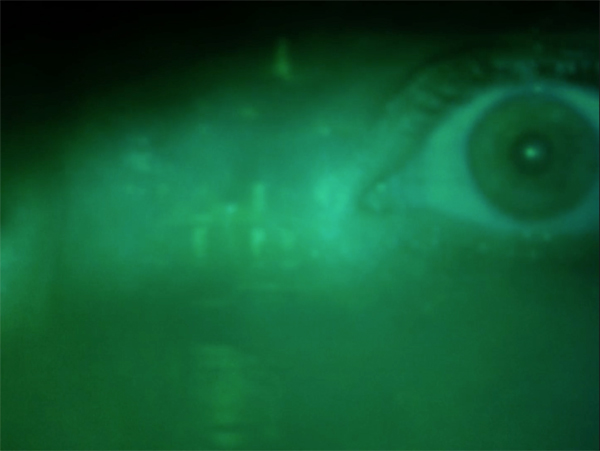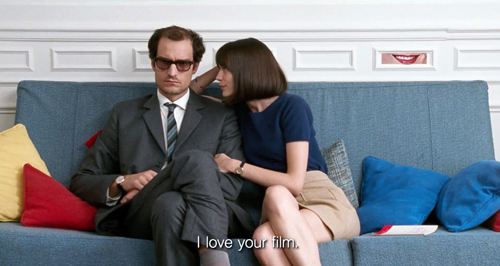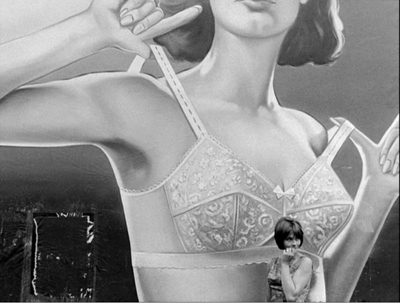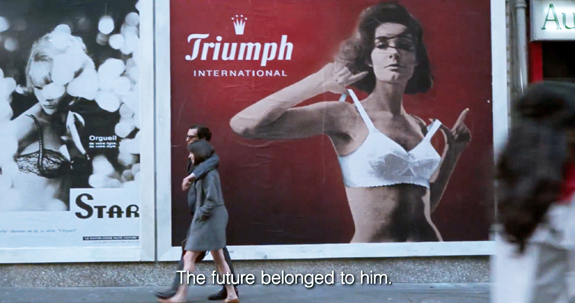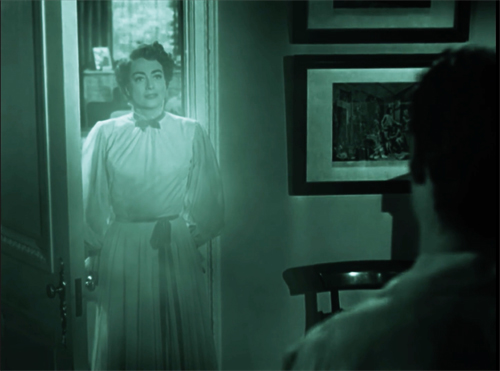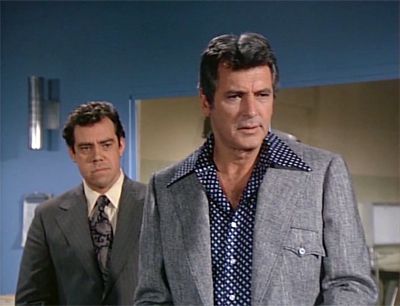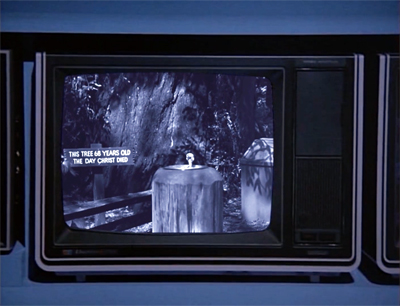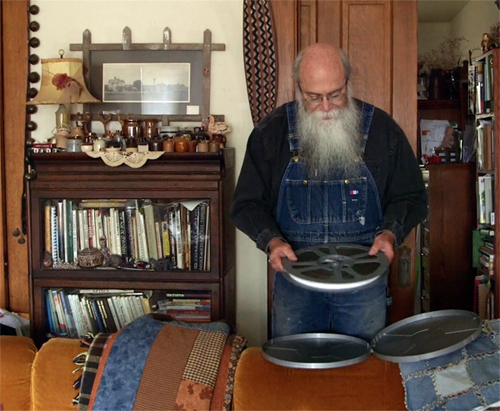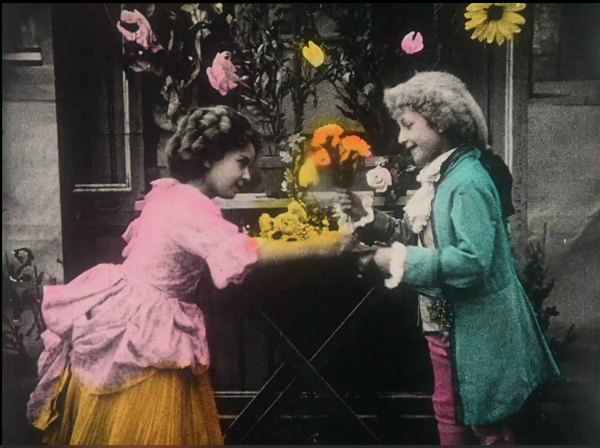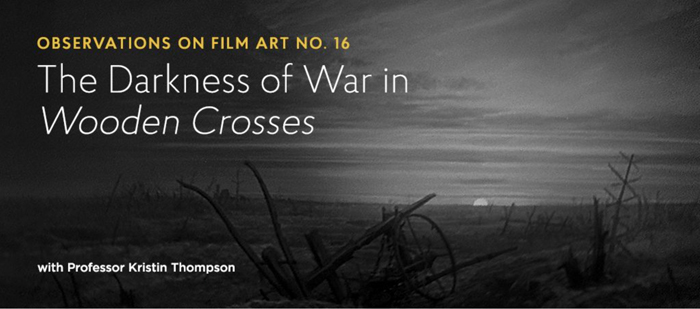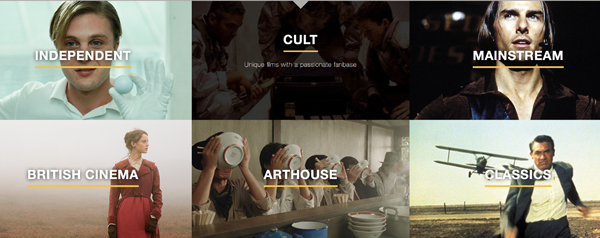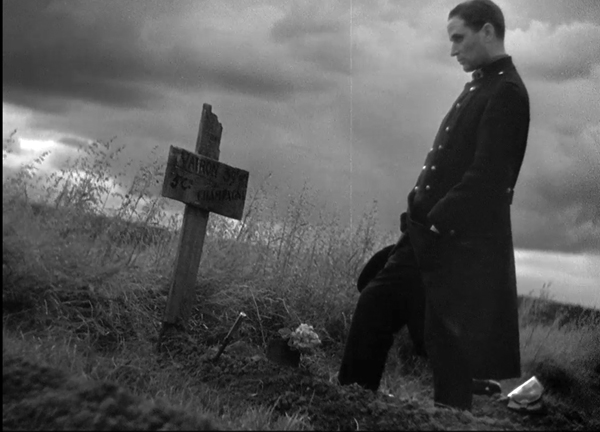Archive for the 'National cinemas: France' Category
The very most modern classic film festival in the world
DB here:
Cinema Ritrovato of Bologna got off to a roaring start on Saturday. Or rather, Friday. Or maybe the previous Monday. It’s hard to keep up; the event sprawls beyond its official boundaries.
For five days before the official opening, there were one-off screenings on the vast Piazza Maggiore and in the more intimate Cineteca. Those evenings you could have seen Gilda or Raging Bull or Madame de… or an Ingmar Bergman documentary or Sacco and Vanzetti (1971), the last in the presence of director Giuliano Montaldo. On what may be final night (who knows?), next Sunday, the Piazza hosts a restored version of Grease. Did you know it needed restoration? Me neither.
The festival’s motto might be Too much is never enough. Over 500 titles now grace seven venues, if you count the Maggiore, a little piazza featuring carbon-arc projection, and an underground warren I’ll tell you about shortly. The fact that the latter is still under construction didn’t stop the newly established programming team from, of course, showing films there.
I’m here solo because household matters kept Kristin home in Madison. I’ll try to post some blog entries that suggest the sweep and depth of this festival, now more than ever the Cannes of classic cinema.
Under the sign of Scorsese
The Raging Bull screening was a tribute to a filmmaker who has always mattered to Ritrovato. One of the two auditoriums in the Cineteca is named for him, and under his auspices The Film Foundation has for years provided restored, often overlooked classics from outside the Western canon. Scorsese received a hero’s welcome yesterday, with an interview in the city’s biggest venue, the Teatro Communale and a Maggiore screening of Enamorada by Emilio Fernandez. Interestingly, the Foundation has provided restorations of Enamorada in both digital and photochemical formats.
I couldn’t cover either event; tickets to the conversation had long been sold out, and I was logy from jet lag well before Enamorada got going. I did, however, grab a few shots of the Piazza crowd before the screening. After twenty-plus years, I had never seen that huge space so jammed with people. An official shot of the event is at the bottom of today’s entry, and it shows only a fraction of the people assembled. A video record of Scorsese’s opening remarks is on the Cineteca Facebook page. It starts with a Mariachi band.
My day before the Scorsese blowout was more sedate than usual. I caught up with several friends in these early hours so as to have time before the big crunch comes later in the week. (There are now more evening screenings than ever before.) I went to The Brat, a 1931 John Ford I’d seen before in a so-so copy. The film is minor Ford but enjoyable for its comic vignettes in a night court, a wild sequence on a swing reminiscent of Wings, and an ingratiatingly scratchy-voiced performance by Sally O’Neill. Helping the film along was the newly refitted venue, the Jolly, now cooler and more comfortable.
I had time as well to re-see another 1931 title, the restored Jean Grémillon short feature Daïnah la métisse (1931). It’s a stunningly shot drama of a black couple traveling on a swanky French liner. Recut after production for reasons not altogether clear, it still retains enormous power. The gleaming cinematography sets off three areas of the ship: the lavish dining room with its big dance floor, the dark, cavernous engine room, and the misty deck where sexual teasing leads to murder. The film’s bold use of sound–a song track, pulsing engine noises, and passages of dead silence–remind us of how adventurous early talkies could be.
Movies under the Piazza
The Modernissimo cinema was built in 1915 and underwent renovation in the 1950s and 1960s. It was split into two parts, and the underground section is the one that is being renovated for contemporary use. The Ritrovato team has found funding to create it as another venue for festival screenings, and on Saturday they admitted a batch of us to check on progress and see a serial.
It’s a very big, raw space, with a balcony and side boxes. The seating isn’t ramped; we’re all on the same level, but the high screen compensates for sightlines. Naturally I sat in the front, so no problem there.
The film, the first installment of Wolves of Kultur (1918, Joseph A. Golden) was nothing to write home about artistically–plotters steal the plans for a supertorpedo–but it was fun and well preserved, with nice tinting. Marianne Lewinsky’s program notes promise that later episodes will be more enticing; she calls it a Kama Sutra of serial conventions.
Some of the design plans for the cinema can be found here. Here are two of my shots from Saturday.
I have more to report, but I’ll save that stuff for entries later in the week. In addition, thanks to digital whiz Erica Moulton we’ve just set up an Instagram site here. It already has shots I haven’t included in this entry. I’ll try to post pix throughout this wild and crazy event.
A special thanks to the Directors of this year’s Ritrovato–Cecilia Cenciarelli, Gian Luca Farinelli, Ehsan Khoshbakht, and Marianne Lewinsky–and festival Coordinator Guy Borlée, as well as to all their programmers, consultants, and staff. They pull off a magnificent, epic event every year.
The Scorsese and Piazza Maggiore photos are by Lorenzo Berlando.
Piazza Maggiore Saturday night for the Scorsese presentation.
Wisconsin Film Festival: Confined to quarters
12 Days (2017).
DB here:
I try to watch any film at two levels. First, I want to engage with it, opening myself up to the experience it offers. Second, I try to think about how the film is made, why it’s made this way, and what those practices and principles can teach me about the possibilities of the medium. That second level of response, not easy to sustain in the thick of projection, comes from my research interests, something spelled out as the “poetics of cinema.”
Most critics, particularly those reviewing films on a daily basis, don’t have the time or inclination to reflect on that second level. I’m lucky to have the leisure to mull over what this or that film can suggest about film in general. When a new release points me toward something I think is intriguing, I’ll go back and watch it again. I saw Zama three times last year, and Dunkirk five times. After three viewings and getting the Blu-ray, I think I’m ready to write about Phantom Thread fairly soon.
Several films at the festival set me thinking. Vanishing Point (1971), which I hadn’t seen in a long time, confirmed my idea in Reinventing Hollywood that 1940s narrative strategies resurfaced in the 1970s. (Whew.) We get a crisis structure motivating a flashback, which itself embeds further flashbacks, everything tricked out with plenty of road rage.
Philippe Garrel’s Lover for a Day (L’Amant d’un jour, 2017) reminded me of how important coincidence is in narrative, particularly the accidental discovery of an important item of narrative information. You know, like coming home just as somebody’s about to commit suicide. Or discovering on your way to the WC that your lover’s having sex with someone else. I began to wonder if the episodic nature of art films, which are built more on routines than on sharply articulated goals, gets away with such handy accidents by suggesting that with so many characters drifting around, they’re bound to intersect occasionally. Realism once more becomes an alibi for artifice.
And I was happy to see American Animals (2018), an amateur-heist movie that uses my friend the flashback in a way that cunningly misleads us. I will say no more, except to refer you to other reflections on caper movies, and to express my hope that Ocean’s 8 will offer some fresh twists too.
All of these films employ what we might call omniscient point of view. The film’s narration shifts us among many characters in many places and times. Herewith, though, some thoughts on two films that tie us down.
Elbow room
The Guilty (2018).
One of cinema’s great powers is its ability to shift locales in the blink of an eye. Unlike proscenium theatre, bound to drawing rooms or perspective streets, a film can carry us from place to place instantly. Novels can do this too, of course, and so can certain theatre traditions, such as Shakespeare’s wooden O. But cinematic crosscutting swiftly from one line of action to another and back again is such a powerful tool that many theorists identified it as part of the inherent language of cinema. The medium seemed wired for camera ubiquity.
At certain periods, though, filmmakers kept to single spaces. Early cinema’s one-shot films locked us to a single view, and in the 1910s, long scenes would play out in salons and parlors. Even after the arrival of crosscutting and other editing strategies, some filmmakers embraced the kammerspiel, or “chamber play” aesthetic popularized in Germany. Lupu Pick’s Sylvester (1924), Dreyer’s Master of the House (1925), and other silent films built drama out of micro-actions in tight spaces. Later Hitchcock took this premise to an extreme in Lifeboat (1944), Rope (1948), Rear Window (1954), and to some extent in Dial M for Murder (1954). Rossellini’s Human Voice (1948) is another instance which, like Rope and Dial M, was based on a play.
The confined-space option reemerges every few years. Put aside Warhol’s psychodramas, so well analyzed by J. J. Murphy in his book The Black Hole of the Camera. Most of Tape (2001), Panic Room (2002), Phone Booth (2002), Locke (2013), and Room (2015) follow this formal option. Two striking films from our festival show that this strategy still holds a fascination for directors. They know that spatial concentration can shape the audience’s experience in unique ways.
In The Guilty director Director Gustav Möller ties us to Asger, a Danish policeman assigned to answering calls on an emergency line. A woman caller tells him she’s been kidnapped, and he tries to locate her while also giving her advice on how to protect herself. In the meantime, he summons police units to track the car she’s in and to investigate the household she’s left behind. In the course of this, we come to understand that he’s grappling with his own problems. He’s about to go before a judge for an action he committed on duty, and his partner is going to testify about it. The whole action takes place in more or less real duration, in eighty-some minutes of one night.
The Slender Thread (1965) similarly includes longish stretches confined to a suicide-hotline agency, but it supplies flashbacks that take us into the caller’s past. Here, we stay in place with Asger. By confining us to what he hears, and what little he sees on his GPS screen, the narration obliges us to make inferences that seem reasonable but that turn out to be invalid. I can’t say more without giving away the twists, but it’s worth mentioning how keeping major action offscreen enables the film to summon up the Big Three: curiosity (about the past), suspense (about the future), and surprise (about our mistaken assumptions).
The Guilty is a sturdy thriller, and it certainly works on its own terms. While restricting us to a character, it doesn’t plunge–as many films would have been tempted to do–into his mind, by means of flashbacks or fantasies. These would have “opened out” the film, but lost the laconic objectivity of the action we get.
The film coaxed me to reflect on how the reliance on the conversational situation allowed for a certain looseness at the level of pictorial style. Once we’re tethered to Asger at his workstation, not a lot hangs on choices about camera placement or shot scale. As long as his face, gestures, and body behavior are apparent, niceties of framing count for less. His reaction can be signaled adequately from many angles. He’s so stone-faced that even a 3/4 view from the rear suffices.
In other words, I can’t see that the situation is submitted to a stylistic pattern that would add another dose of rigor to the filmic texture. The style, I think, works to adjust our attention in the moment, in the manner of what I’ve called “intensified continuity,” rather than building longer arcs of pictorial interest. While the plot constraints are strict, the visual style seems less so.
What would be a way to make pictorial style more active? Well, the obvious cases are Hitchcock’s long takes in Rope and optical point-of-view in Rear Window. (And, I’d suggest, his use of 3D in Dial M.) Dreyer did something similar in The Master of the House, in which editing patterns activate a range of props and bits of setting. Films like these benefit from including several characters onscreen, providing details of setting and building up spatial “rules” that channel our vision. Or think of Kiarostami’s auto trips (I almost said “car-merspiel”), which limit camera setups pretty stringently. Ditto Panahi’s ways of stretching the notion of “house arrest” in This Is Not a Film (2011), Closed Curtain (2013), and Taxi (2015)–films that tantalize us with the possibility of glimpsing the world outside.
Möller chose, with good reason, to rivet our attention on two basic elements: the calls and Asger’s responses. The cop’s interactions with others in the office are minimal, and there’s almost no play with props or setting, apart from a moment when Asger decisively snaps down the windowblinds. Our attachment breaks off only at the end, at the conventional moment when the protagonist turns from the camera and walks away.
The tight concentration enhances both plot action and character revelation, and we’re obliged to listen more closely than we do in most movies. Along the way, blinks and eye-shifts and finger-tapping become major events. Still, The Guilty reminded me that every choice cuts off others, forces new choices, sets up constraints–and new opportunities. Film art is full of trade-offs.
12 Day wonder
12 Days (2017).
A more “dialectical” approach to confined space is on display in Raymond Depardon’s documentary 12 Days (2017), probably the most emotionally wrenching film I saw at our fest. The situation is a similar to that in his Délits flagrants (1994), which recorded police interrogations of suspects. The official procedure captured here is a hearing, mandated within twelve days of a patient’s being involuntarily committed to a psychiatric hospital. A judge reviews the case to determine whether the patient should be set free.
Sessions with ten patients take us along a spectrum of disturbance, from a woman believing herself persecuted in her office to a man whose inner voices commanded him to stab a stranger. The last petitioner, a woman sufficiently aware of her illness to admit that she can’t care for her baby, makes a lucid case for being allowed to visit the child occasionally.
All these encounters are shot in a simple but strict fashion. In three reverse-shot setups, we see the petitioner, the judge, and a wider view of the petitioner and the lawyer who states the case.
This neutral approach, far less free-ranging and nerve-wracking than the shots in The Guilty, doesn’t try to amp up the suspense with cut-ins or zooms or pans. It throws all the emphasis on the interchange. Call it Premingerian, if you must.
Sandwiched in between these inquiries are shots of the hospital itself. We’re still confined, in that we never leave the grounds, but these let us breathe a little. Sometimes these interludes are simply quiet tracking shots down empty corridors; sometimes we hear wails and cries behind locked doors; sometimes we see the patients in a rest area, smoking or pacing or simply staring.
By respectfully observing the surroundings, Depardon lets us into a bit of the texture of the patients’ lives and makes us understand that this hospital, while apparently not very oppressive, is still far away from freedom.
Confronting 12 Days we on the outside are forced to balance compassion with prudence. Should a calm, polite man who believes he beatified his father by killing him be allowed free access to our world? Most of the patients we see are remanded for further treatment, but one leaves the judge ambivalent, to the point that we aren’t told of the final decision. We’re left to reflect that to become wholly human, we must confront madness in our midst. As the opening quotation from Foucault has it: “The path from man to true man passes through the madman.”
Thanks as usual to our Wisconsin Film Festival programmers: Ben Reiser, Jim Healy, Mike King, Matt St John, and Ella Quainton. Thanks as well to Tim Hunter for giving us access to Vanishing Point. In all, it was a swell event. See you there next year?
12 Days reminded me that one of the less-known examples of early Direct Cinema was Mario Rispoli’s Regard sur la folie (1962), which presents afflicted patients and their caregivers with a surprising lack of sensationalism.
We’ve written a fair amount about site-specific narratives. I discuss the crystallization of the trend in Reinventing Hollywood: How 1940s Filmmakers Changed Movie Storytelling, and I consider its recent revival in The Way Hollywood Tells It: Story and Style in Modern Movies. On the blog, we’ve discussed Panic Room, Dial M for Murder, The Master of the House, This Is Not a Film, Closed Curtain, and the Kammerspielfilm. And on coincidence, you can drop by here.
12 Days.
Wisconsin Film Festival: Footage fetishism
The Green Fog (2017).
DB here:
Kristin and I have been unusually busy during this year’s fest, its twentieth, so I got to see only ten of the vast array of offerings. Herewith a first report on what our intrepid team–Ben Reiser, Jim Healy, Mike King, Matt St John, and Ella Quainton–programmed and put before adoring crowds. Today we look at movies about movies.
JLG par Not JLG
The title of Michel Hazanavicius’s Le redoubtable has been Francoanglicized as Godard mon amour, not a bad way of signaling it’s a French movie. (The same tactic turned Nikita into La Femme Nikita.) The title also lets us know it centered on the most important living director. And the possessive pronoun correctly puts us in the place of the heroine, the late Anne Wiazemsky, whose memoir-novel chronicled her few years with Godard. How could the film not take her side? On my limited exposure to the man, “difficult” doesn’t begin to describe his temperament.
The film omits Anne’s role in Bresson’s Au hasard Balthasar, which Godard admired extravagantly, and takes us briefly through the shooting of La Chinoise (1967). Soon we’re plunged into ’68 debates about making commercial films, making political films, and “making films politically.” We’re firmly attached to Anne, to the point that Godard’s activities at the Cannes festival are kept obstinately offscreen while we see her sunbathing at a villa. There are unattributed voice-overs from an older male, but mostly we’re in Anne’s consciousness as she struggles to live with the torn, cruel, more or less ridiculous man who brought her into the film industry.
As a satire, the film goes for straightforward targets, such as the moments when people come up to our filmmaker and ask why he doesn’t make movies like Contempt any more. That seems to be Hazanavicius’s question as well. He makes no effort to match his film’s style to Godard’s work in the years when the story takes place. It would have been bold, though probably off-putting, to mimic La Chinoise or Le Gai Savoir (1969), one of his most daring experiments, a sort of Child’s Garden of Semiology. Instead we get snatches of pre-1967 scores, chapter titles, compositions, and iconography, with special emphasis on Une Femme mariée (1964), perhaps a sly reference to Anne’s role.
While pastiching the early work, Hazavanicius softens its edges. One of Godard’s minor innovations, for instance, was inserting a chapter title partway through a new section, rather than planting it at the outset. That not only blurs the boundary between segments and usefully jars the viewer, but it also lets the title give a sharper commentary on the images around it. Tarantino embraced this technique, but Hazanavicius is tidier in his chaptering. Similarly, his shoutouts to planimetric framing don’t really exploit their disruptive possibilities.
His film reminds us that Early Godard has become virtually a period style. Hence, perhaps, Godard’s own flight from it over the last forty years, in the process making films of exceptional beauty and abrasiveness. Still, we tend to forget how unsettling the early films remain. (At the Venice International Film Festival last year, Kristin attended the packed 400-seat screening of the restored Two or Three Things I Know about Her and reported that perhaps a third of the audience had walked out by the end.) Despite all his influence, the original Godard will never become “normalized,” just as Schoenberg will never become elevator music.
Godard mon amour goes down easy and doesn’t, to my way of thinking, have a brain in its pretty head. Godard emerges as a wacky celebrity, politically confused and emotionally bullying. There’s no attempt to show how his personality surfaces in his art, or even why his art is important. Still, Godard mon amour usefully calls attention to a director who, in his 88th year, has another feature coming to Cannes. It’s called Livre de l’image, and it promises to be in five chapters, like the fingers of a hand.
Fog over Frisco
Made on commission from the San Francisco International Film Festival, The Green Fog is a collage exercise in associational mode, with echoes of Craig Baldwin’s work. In their own gonzo filmfreak way, Guy Maddin and Evan and Galen Johnson have created an homage to the city and its ultimate film, Vertigo.
It can please on many levels. First, there’s the spot-the-clip quiz in the manner of Marclay’s The Clock. Some bits I found fairly easy to identify, but others are drawn from obscure movies and TV programs. All showcase San Francisco. Second, there’s the looping and twisting motifs of male-female tension, surveillance (films projected, phone lines tapped), and class identity: we’re forced to notice how tony restaurants set the stage for 80s big-hair melodrama.
Then there’s the pleasure of watching how cutting can suggest expanding narrative trajectories through eyelines. The Green Fog is an extended exercise in the Kuleshov effect. Sometimes the whole process gets embedded: people watch screens showing people watching people. Or they’re watching a scene from another movie: McMillan, without wife, sees a tree that was 68 years old when Jesus was born.
These linkages are accentuated by the habit of omitting lines of dialogue, so that characters seldom speak but, in shots plagued by visual hiccups, emphatically react to one another, sometimes just by smacking their lips or gulping.
Not least, The Green Fog is a free fantasia on incidents and images from Vertigo. Although only one Vertigo shot is shown, the canonical moments are evoked by their mates in films both earlier and later: people scrambling up buildings and plummeting, couples embracing in horse stables, men pulling women out of the bay, and–thanks to the invading green miasma–a woman stepping out of a doorway to confront her lover. Scotty’s vision of Judy’s aura is made into a city-wide contagion of obsessive love.
The film takes our memories of bits of Hitchcock’s film and spirals out from them, creating a hallucinatory whirlpool of variations on clichés. Going beyond Vertigo, the film evokes its own vertigo, a media phantasmagoria. I was reminded of Geoffrey O’Brien’s book The Phantom Empire.
How did you wander into this maze, anyway, and how would you get out? Do you in fact want to, or do you prefer to sink deeper into it, savoring its manifold ramifications and outlying distortions?
The teeming image-clusters of The Green Fog, made even more eerie and lyrical by Jacob Garchik’s score, capture the delirium of cinephilia, reminding us of how much a masterpiece owes to anonymous, banal visions pulsing through popular culture.
Right here in River City
William Brinton and his wife Indiana were a colorful couple. They were nudists and kept a mummy in their living room. More to our point, around 1900 they ran an Iowa theatre and traveled throughout the midwest showing films and lantern slides. Brinton died in 1919, Indiana in 1955, and the executor of her estate in 1981.
The Brinton collection passed to Michael Zahs–junior-high history teacher and confessed “saver” of things. Three truckloads of boxes came to Zahs labeled “Brinton crap.” They contained over 130 films, 700 magic-lantern slides, many sound recordings, and a host of vintage equipment.
Zahs was told to bury the nitrate materials and dispose of the rest. Instead he hung on to everything, and eventually the American Film Institute and the Library of Congress selected several reels for preservation. Since 1997 16mm copies of Brinton titles have been shown in festivities at the Graham Opera House in Washington, Iowa–a site recently declared by the Guinness Book of World Records to be the world’s oldest surviving film venue. The University of Iowa Library has committed to keeping safety copies of the entire collection.
This fascinating story is brought to light by Tommy Haines and Andrew Sherbourne of Northland Films. Saving Brinton is, like Bill Morrison’s Dalton City: Frozen Time (reviewed by Kristin here), a heroic tale of cinema lost and refound. Morrison’s film centers on 1910s and early 1920s features, but the Brinton legacy takes us back to earlier times. There are “actualities” (newsreels) and gag reels and even–watch Serge Bromberg’s eyes light up–a lost Méliès. Many items are in superb condition, with well-preserved hand-coloring. There are films from Lumière, Edison, and other major companies. In one, a powerful panning shot shows Teddy Roosevelt parading down Market Street in San Francisco (without green fog) just before the earthquake. And then there are the projectors and paper, including a Pathé catalogue.
Saving Brinton is as much a portrait documentary as an account of film rescue. The Brintons stand out, not least for William’s fascination with airships, but the star of the present-day show is Michael Zahs. With his Darwinian beard and jovial presence, he comes across as one of those impresarios who knows a lot about everything, from chemistry to grave marker symbolism. For four years the filmmakers followed his efforts to preserve and show the Brinton legacy, while also tracing his personal life. We get scenes of his devotion to his ailing mother, who died during filming, and interplay with his wife, a smiling woman who doesn’t mind sharing her household with combustible materials. At the same time, this packed documentary evokes the community that welcomed Zahs’ cheerful obsession. As a graduate of the University of Iowa, I had to beam at the sheer niceness radiating from these people and their town and the earth they steward.
On 23 April the University Library in Iowa City will be screening the whole collection, with seven projectors running the films on loops. You can sample them online, in pretty copies. And Saving Brinton will continue to tour festivals; you can track its progress here. This charming documentary is a must-see for everybody who loves old movies, not to mention flyover Americana.
My quotation from Geoffrey O’Brien’s The Phantom Empire: Movies in the Mind of the 20th Century (New York: Norton, 1993) comes from p. 28.
The Saving Brinton website gives more information on the film. Diana Nollen’s story in The Gazette supplies helpful background. Watch the trailer and glimpse our old friend Rick Altman, emeritus at the University of Iowa.
The Language of Flowers (n.d.).
FilmStruck strikes again, and again, and again
DB here:
First, the latest installment of our Observations on Film Art series has dropped, as the kids (and now the grownups) say. It features Kristin on unconventional lighting (including darkness) in the great early French sound film Wooden Crosses (1932). This intense World War I drama boasts scenes of Fuller-like frenzy, mixed with somber passages. It’s by Raymond Bernard, a director who was a bit obscure for a while, but who gained great prominence with the rediscovery of his remarkable Miracle of the Wolves (1924).While that film doesn’t seem to be available on US video, several other Bernard films are streaming on the Criterion Channel of FilmStruck.
The arrival of Kristin’s entry tallies with the new and expanded FilmStruck. To the 1200 or so features already in the channel’s library, TCM has added 600 classics from MGM, Warners, RKO, and other studios. Many of these titles, including Citizen Kane and The Thin Man, have never been available on streaming before.
The price remains the same: $6.99 per month for vanilla FilmStruck, $10.99 for it and the Criterion Channel (which nearly all subscribers take). You can get the whole package on a yearly basis for $99.00. Yes, I bought a subscription.
Third, but no less big a deal, we just learned that FilmStruck has launched in the UK as well.
The choice of titles is smaller, partly because some films are held by other licensees in Europe, but there’s still a vast array. Cost is again very reasonable: £5.99 per month, £59.90 for a year and two free months. We think Observations installments will be available on the UK site.
I sometimes wonder how I’d have turned out if I’d had so wide and deep an access to films during the 60s. Would I have read books or listened to music? Maybe all that kept me balanced was limited access to movies. Then again, I spent a lot of time ferreting out finds–time that could have been spent watching them. I grew up in a film culture devoted to seeking whispered-about rarities and traveling to see them. Kristin and I once went to a screening of L’Age d’or supplied by a protective collector who brought the nearly unseeable film with him on the plane. Now, in the wild spiral from scarcity to superabundance, all it takes to see Buñuel’s masterpiece is pressing your remote or clicking your trackpad and paying your credit-card bill.
Life is a trade-off, but still….pretty nice to have choices. Speaking of which, our earlier installments on the Criterion Channel are here.
As usual, thanks to the Criterion team: Peter Becker, Kim Hendrickson, Grant Delin, and their colleagues. They not only make nice movies available, they make nice movies about them.
Michael Koresky has a wide-ranging introduction to Bernard’s 1930s films on the Criterion site, and Phillip Lopate has a characteristically engaged appreciation at Cineaste.
Wooden Crosses.












